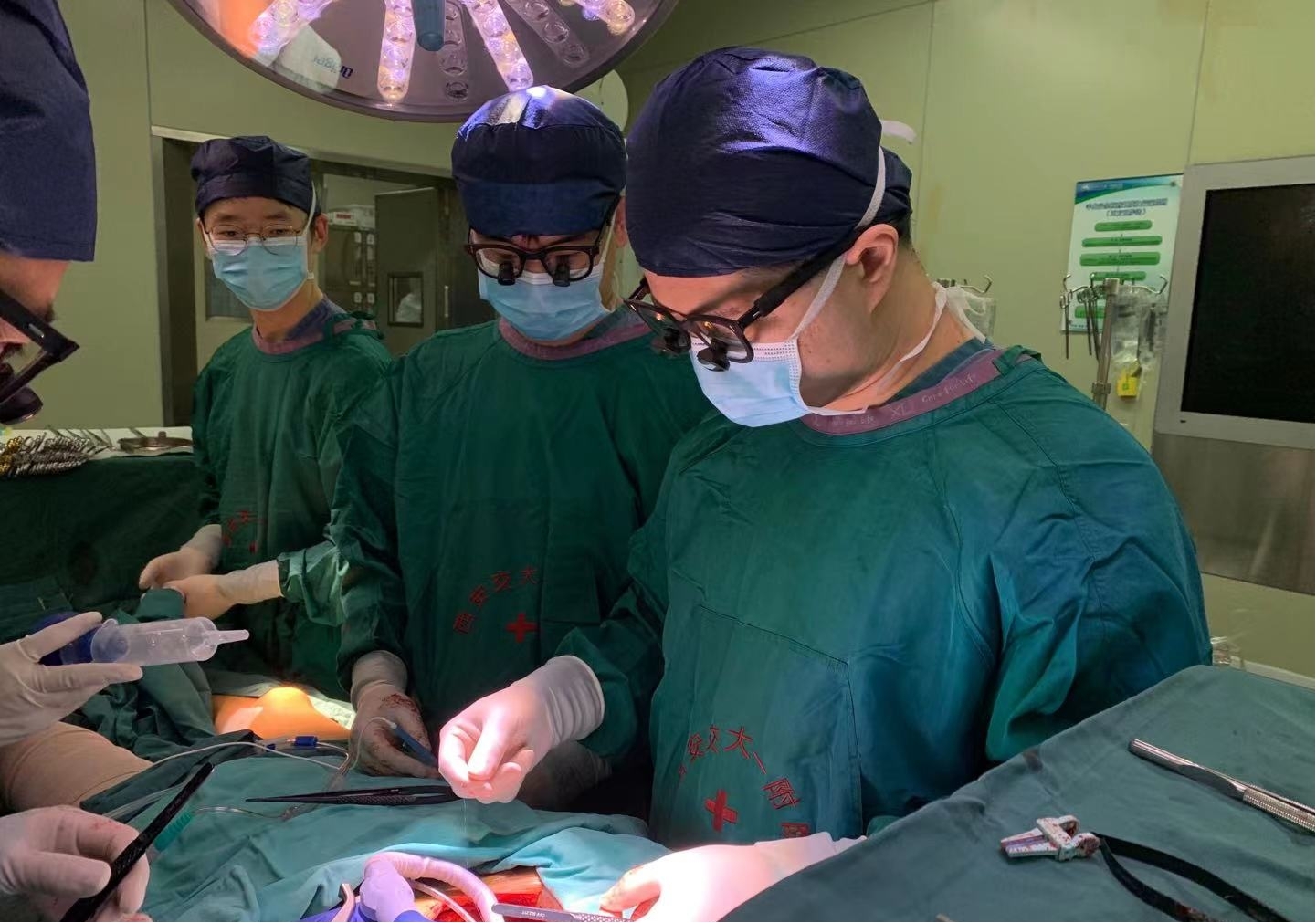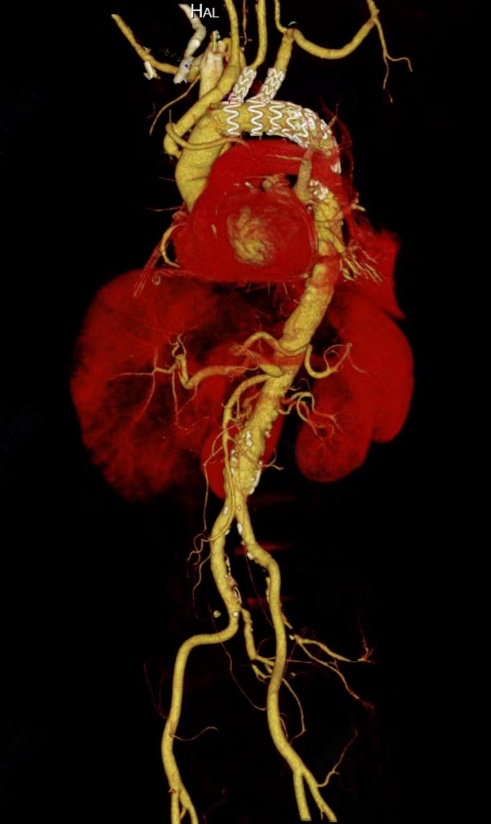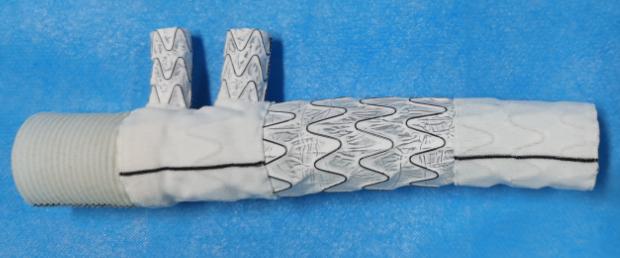On February 7, 2023, a patient with Stanford type A aortic dissection successfully underwent innovative dual-branch aortic stent grafting for emergency surgery in the First Affiliated Hospital of Xi’an Jiaotong University (XJTU). This is the world’s second case of successful placement of such stent, which will bring novel clinical strategies for more patients with aortic dissection.
On January 11, the patient suddenly suffered from tearing pain in the chest and back, accompanied with sweating. CTA showed the sign of aortic dissection and was urgently transferred to our hospital. CTA showed that the ascending aorta was significantly widened, and the dissection was torn from the bifurcation of the brachiocephalic artery of the aortic arch to the upper segment of abdominal aorta, accompanied by severe calcification and narrowing of the coronary artery. A large quantity of thrombosis was detected in the aortic arch, the descending thoracic aorta and the upper abdominal aorta, and multiple vital organs, such as liver, kidney and gastrointestinal tract, were involved.
After admission to Department of Cardiovascular Surgery, Director Yan Yang and Deputy Director Shi Tao of ICU delivered in-depth consultation regarding the surgical plan, and decided to apply innovative dual-branch aortic stent grafting to urgently implement "ascending aorta replacement+total arch replacement+elephant trunk surgery" for this patient.

Under multidisciplinary team (MDT) cooperation by Department of Anesthesiology and Perioperative Medicine and the Department of Ultrasound Medicine, Director Yan Yang from Department of Cardiovascular Surgery, as the chief surgeon, performed emergency thoracotomy. Intraoperative exploration revealed that the patient's heart was significantly enlarged and the anterior descending coronary artery was severely calcified. Director Yan delivered fine seperation with cautions. First, the diseased aorta was removed, and then an innovative dual-branch aortic stent was grafted along the descending aorta. The dialated ascending aorta was replaced by an artificial blood vessel along the junction of sinus tract, which was end-to-end anastomosed with the dual-branch stent, and Sun's operation was completed. To shorten the operation time, another team of surgeons employed minimally invasive endoscopy to obtain the right great saphenous vein as a bridge vessel, and two teamsjointly performed "ascending aorta replacement+total arch replacement+elephant trunk surgery (Sun's operation) combined with coronary artery bypass surgery". Meantime, IABP was implanted to improve coronary blood supply and cardiac function. After the operation, the patient was recovered well and discharged recently.

Three-dimensional reconstruction of postoperative stent

Picture of dual-branch stent
Director Yan Yang highlighted that "the dual-branch stent system applied in this surgery is independently designed byPerMed, a domestic biotech enterprise, which can shorten the anastomosis time between the left subclavian artery and the left common carotid artery, shorten the operation time and cardiopulmonary bypass time, mitigate intraoperative bleeding and minimize cerebral hypoxia time".